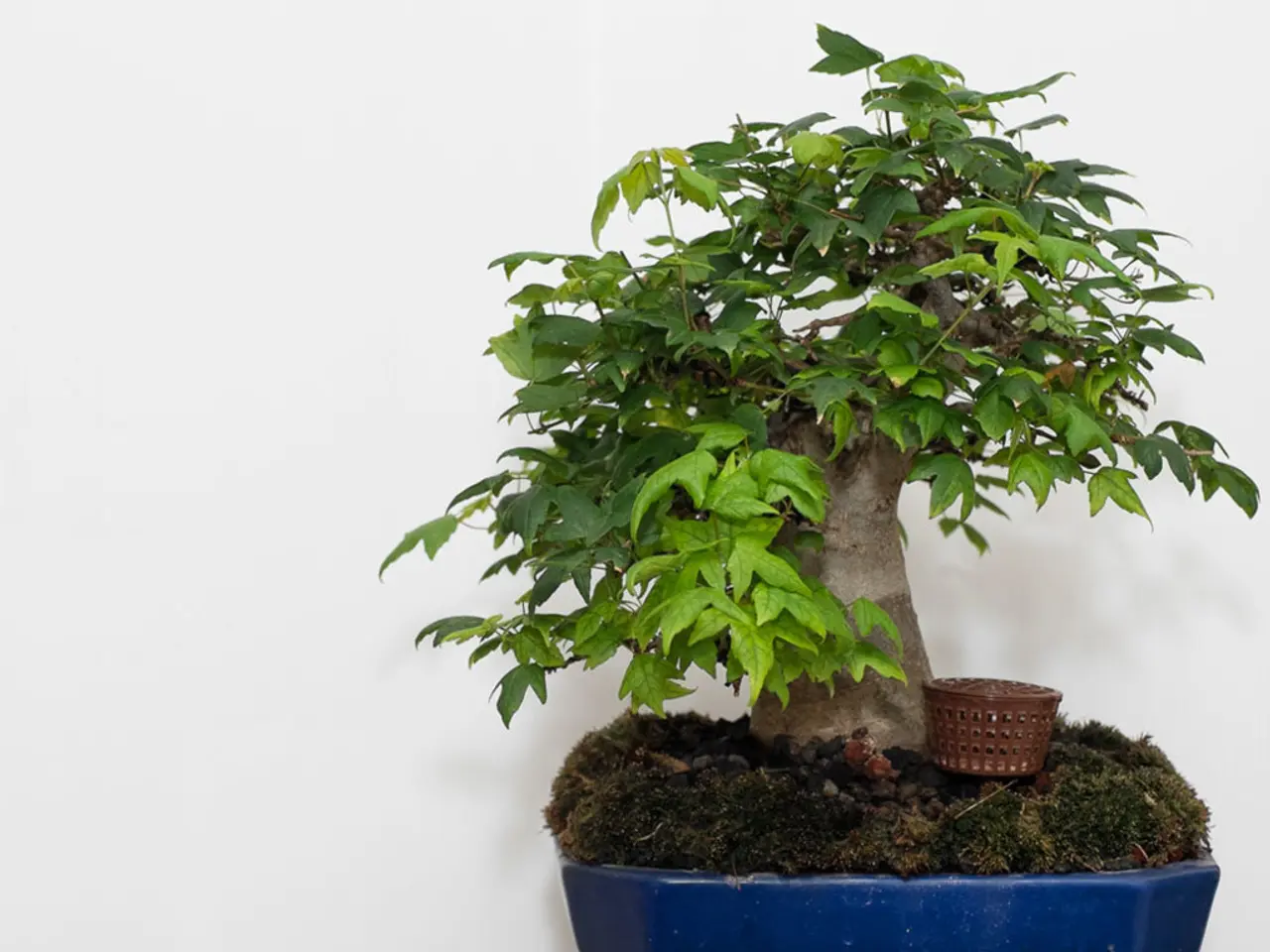Sustainable Bonsai Maintenance: Green Methods and Ecological Decisions
In the world of bonsai, an ancient art form, the pursuit of sustainability is gaining momentum. By adopting eco-friendly practices, bonsai enthusiasts can nurture their trees while contributing to a greener future.
Water conservation is a key aspect of sustainable bonsai care. Bonsai trees are watered only when the topsoil is dry, avoiding overwatering and reducing water waste. Techniques like the 'water-drop' method are used to ensure that water is delivered directly to the roots, minimizing runoff or stagnant water.
The use of natural and well-draining soil is another essential practice. Specialised bonsai soil components such as akadama, pumice, and lava rock support healthy root systems without relying on synthetic or resource-intensive amendments. This approach helps maintain soil health and reduces dependence on chemical fertilizers.
Minimal fertilizer application is another eco-friendly approach. Bonsai are fed only during growing periods with balanced fertilizers, lowering the environmental impact compared to heavy or indiscriminate fertilizer use.
Waste reduction is also a focus in sustainable bonsai care. Sifting and reusing bonsai soil rather than discarding it all encourages sustainability by minimising soil waste and the need for fresh soil production.
Regular pruning, shaping, and attentive care promote plant health and longevity, reducing the need for frequent repotting or replacement plants. This not only supports sustainability but also makes bonsai cultivation a calming, reflective hobby that cultivates patience and respect for living organisms.
Adopting eco-friendly Bonsai maintenance involves understanding a tree's specific needs and tailoring care strategies for healthy growth with minimal environmental impact. Some bonsai species, such as Juniper and Chinese Elm, are naturally more resilient to pests and diseases. Others, like Chinese Elm, Ficus, or Serissa, can tolerate low natural light conditions.
In extreme weather conditions, bringing Bonsai trees indoors can protect them from damage. However, using recycled paper or cardboard as mulch can potentially harm the tree, affecting soil pH and nutrient availability.
By embracing eco-friendly Bonsai care, we not only nurture these miniature masterpieces but also demonstrate how engaging conscientiously with a small-scale plant can echo larger principles of sustainability—using resources efficiently, minimising waste, and fostering a harmonious relationship with the environment. This mindful approach supports an overall environmentally conscious lifestyle by integrating care, respect, and sustainability into daily living.
Every action in sustainable Bonsai care plays a crucial role in promoting environmental stewardship. By choosing to cultivate bonsai in an eco-friendly manner, we are taking a step towards a greener future, where human ingenuity and natural wonder converge in perfect balance.
In the realm of bonsai care, environmental science and sustainable living intersect as enthusiasts aim to conserve resources through water management, soil selection, and minimal fertilizer use. Moreover, embracing sustainable bonsai practices aligns with home-and-garden principles of waste reduction and echoes a larger lifestyle commitment to eco-friendliness and harmony with nature.




